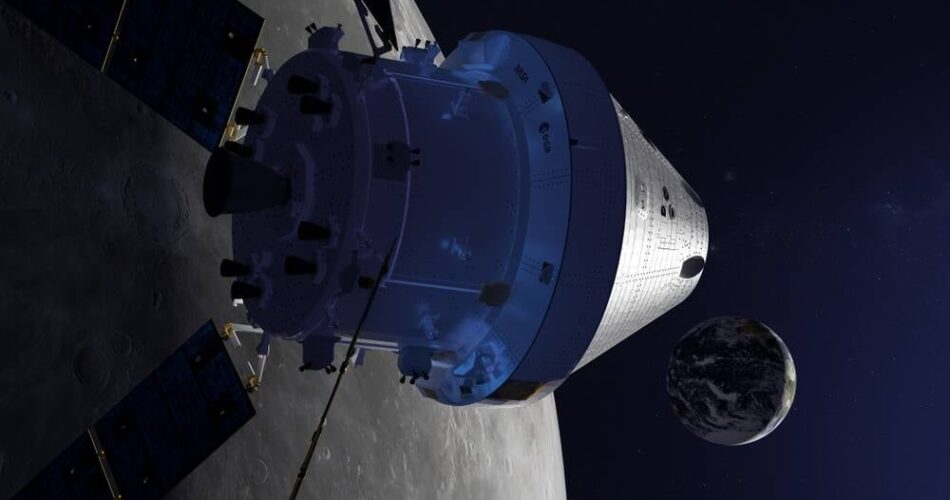NASA’s crewless Orion capsule is all set to return to Earth and splash down in the Pacific Ocean on Sunday, December 11 after spending nearly a month orbiting the Moon.
Orion has been hurtling toward home, and will reach speeds of 25,000 miles per hour (11.2 kilometres per second) as it gets closer and closer. When the pod punches into the atmosphere, it will slow down to 300 miles per hour (134.1 metres per second) and heat up.
“Orion will come blazing through Earth’s atmosphere at temperatures twice as hot as molten lava,” Jeremy Vander Kam, deputy system manager working on the spacecraft’s thermal protection system at NASA’s Ames Research Center, said this week. NASA has covered the spacecraft in a material called Avcoat designed to protect and bring the capsule and future lunar astronauts back to Earth in one piece.
Tiles of Avcoat up to three inches (7.62cm) thick have been attached together to create a heat shield over the top of the spacecraft. The material will reach 5,000 degrees Fahrenheit (2,760 degrees Celsius). That heat will dissipate, keeping the back side of Orion at a much cooler 200 degrees Fahrenheit (93.3 degrees Celsius).
A second material, a 3D Multifunctional Ablative Thermal Protection known as 3DMAT, made out of woven threads of quartz in resin, coats connection points along the spacecraft to keep it together. Once Orion reaches an altitude of about 9,000 feet (2,743 metres), its gigantic parachute will be deployed to slow it down even further to 20 miles per hour (8.9 metres per second) before it enters the sea.
The cone-shaped spacecraft is expected to land somewhere off the coast of Baja California at around 1240 EST (1740 UTC), a little further south than its original target closer to San Diego due to weather conditions, officials confirmed at a NASA briefing on Thursday. The space agency and the US Department of Defense are gearing up to recover the capsule as soon as it hits the water.
US Navy Seal divers will be waiting at sea on USS Portland, an amphibious ship, before they approach Orion on smaller boats. The capsule will be towed back to the ship and attached to cables pulling it inside a well deck, where the water will be drained. The military will bring the capsule and other bits of equipment used for the landing process, such as the parachutes, back onto land from the Naval Base in San Diego for NASA to analyze.
The Artemis I mission to put the unmanned Orion capsule into space launched on November 16 when NASA’s Space Launch System rocket finally got off ground after months of delays due to technical issues and hurricanes in Florida. The heavy-launch vehicle carried Orion to the Moon, where it spent weeks circling the satellite as ground control kept an eye on its navigational systems.
Artemis I is an unmanned dress rehearsal for more ambitious crewed missions to the Moon. The second Artemis mission will send astronauts in orbit around the natural satellite, while the third mission will bring them directly onto the lunar surface.
Bill Nelson, NASA’s administrator, said the mission has been “extraordinarily successful” so far during a television interview with CNN. Nelson said there were now just two more hurdles to cross: the heat shield and parachutes have to work correctly. “Come Sunday morning, we’re going to know.” ®
Source link



